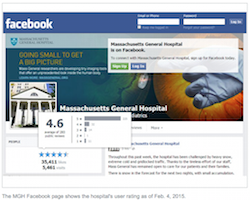The Congressional Budget Office released an issue brief Tuesday that suggested lifting Medicare’s eligibility age from 65 to 67 would save the federal government 5 percent on projected outlays over the next decade, and only “a small share of those people would end up without health insurance.” The idea has been touted by numerous deficit reduction proposals, including those from Republican Paul Ryan and Democrat Alice Rivlin, the former CBO director.
The Congressional Budget Office released an issue brief Tuesday that suggested lifting Medicare’s eligibility age from 65 to 67 would save the federal government 5 percent on projected outlays over the next decade, and only “a small share of those people would end up without health insurance.” The idea has been touted by numerous deficit reduction proposals, including those from Republican Paul Ryan and Democrat Alice Rivlin, the former CBO director.
It’s a bad idea, says Aaron Carroll, a professor at the Indiana University School of Medicine and director of its Center for Health Policy and Professionalism Research. “No one should be under the illusion that the federal government will save money by raising the Medicare eligibility age,” he said in an interview after attacking the report on The Incidental Economist website, which is widely read by health policy researchers and analysts.
First, it’s a cost-shifting plan, not a cost-cutting plan, he pointed out. “Someone has to pay for the health care of those older workers.”
If they continue to work to keep their employer-based health plans, the employer’s portion of the premiums will be deductible from corporate earnings and therefore subsidized by taxpayers. If these newly disenfranchised seniors go into the individual insurance market to buy health coverage because they were no longer working, they would foot the bill out of pocket. But if they are poor and can no longer work, they would probably turn to Medicaid, which is half paid by the federal government.
The majority won’t be poor, though, so the government would obviously save some money there by transferring those costs to seniors. But again, there’s no free lunch. Most people who are still working in their mid- to late-60s earn substantially less than they did during the prime of their working years. If they are not in jobs with employer-sponsored coverage, they will probably wind up in the new health insurance exchanges (assuming health care reform survives), where they will be eligible to buy plans that receive government subsidies.
Indeed, a Kaiser Family Foundation study looked at the projected savings to Medicare if the age were suddenly lifted to 67 in 2014, the year health care reform goes into effect. While the program would save $5.7 billion, the additional costs to employers and the government would be $11.4 billion. “That’s a losing proposition,” Carroll said.
There’s another reason to avoid raising the eligibility age: it would be unfair, Carroll said. Most of its costs would be imposed on the bottom half of the income distribution.
How so? The chief argument for increasing the eligibility age is that people live longer today than they did 30 or 40 years ago, so total benefits really won’t go down. But longer life expectancy isn’t a universal phenomenon. The life expectancy of people who are in the bottom half of the income distribution barely budged between 1977 and 2007, rising from 80 to 81. Longevity for people in the top half of the income distribution, on the other hand, leaped to 87 in 2007 from 81 in 1977. “This would be a very regressive way to cut benefits,” Carroll said.
Got a solution, I asked? “I’d lean more toward a value-based insurance design. Save money by not spending as much on therapies that don’t work,” he said. “But that has its own political pitfalls. A lot of people see that as a slippery slope to death panels.”







